October is a real changeover month in the garden. The perennials are holding on for dear life while the ash trees are shedding leaves by the new time. They are the first to come and the first to go but at least we’ve no ash die-back yet.
Keeping nepeta and alstroemeria deadheaded paid off as they are still putting on a great show. Sedums are turning red and are covered with bees and the dahlias are still producing flowers. The roses are also delivering and are looking very healthy despite some black spot earlier in the year.
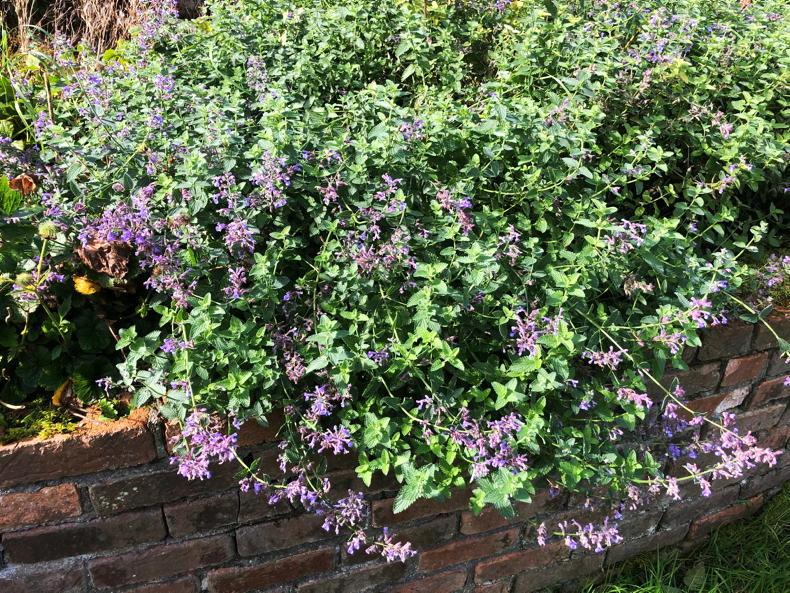
Second flush from nepeta.
The hydrangeas are still going strong and are one of my favourite autumn flowers. They are great doers and require little or no maintenance. Back in April I was telling you about our two massive north-facing hydrangeas that produced few flowers. I cut them back hard in April with the idea that new growth would produce more flowers. Well I was wrong. I’ve got fine, strong plants with long stems and masses of lovely glossy leaves but there’s not a flower to be seen. I will give them one more year to do their stuff.
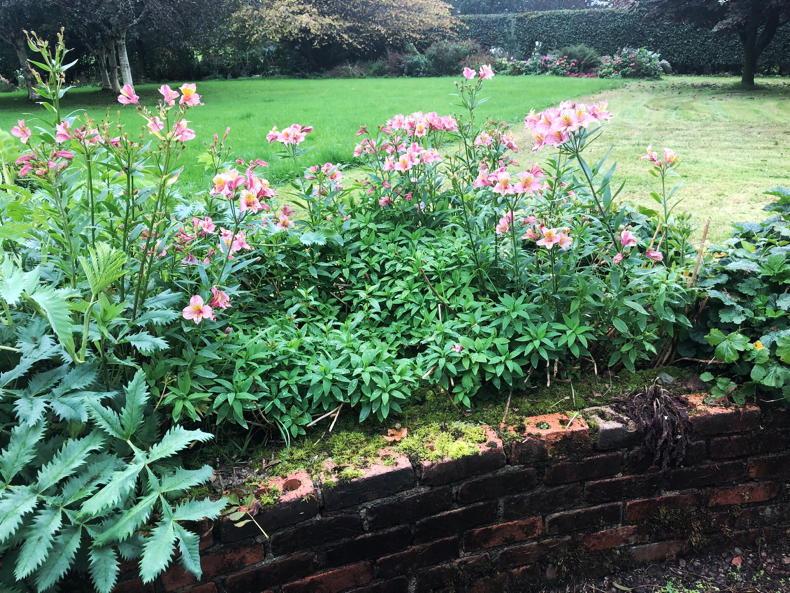
Alstroemerias benefit from deadheading.
Green and red
What’s also looking well is the cotoneaster outside the hall door. Earlier in the year it produced masses of tiny pink flowers and the bumblebees couldn’t get enough of it.
Now it’s covered in little red berries so it will be interesting to see whether it’s the birds or bees that go for it. The white thorns are also covered in berries and the birds have hardly touched the big hips on the Rosa rugosa. So there’s plenty of reserves for the little birds and bees as we head into deep autumn.
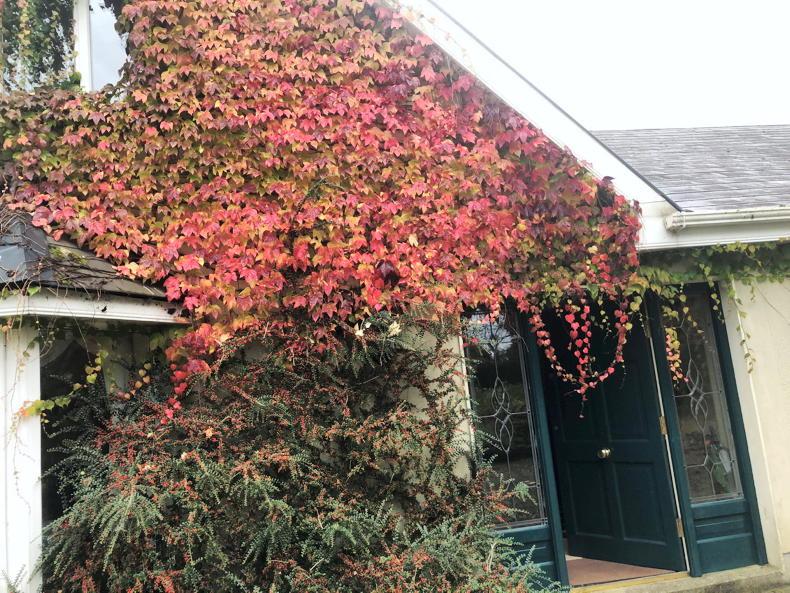
Boston ivy turning red while cotoneaster produces plenty of seeds for the birds.
I’m writing this in the second week of October and what’s noticeable is how green everything still is. We have two red oaks and while the russet red of their autumn colour is spectacular, there is no sign of it yet. The maples are still green and the Boston ivy on the house is barely beginning to turn scarlet. For sheer pizzazz it has to be my favourite for this time of year.
Our big garden project for this year was to put in a ‘berry bed’. I fancied being able to pick a bowl of raspberries or gooseberries from the garden. So we made a bed 16ft x 8ft that was supported by railway sleepers. It was well layered with good soil, farmyard manure and compost.
We planted two gooseberry bushes, a couple of tayberries and blackberries as well as summer and autumn fruiting raspberries. And we waited for the berries to appear.
In the meantime, we were coming down with nasturtium plants that I had grown from seed.

Nasturtiums gained a new fan as I found them great for clearing ground of all weeds.
I couldn’t believe how many plants I got out of one little pack and every pot in the place was filled with them.
They saved me a fortune as I didn’t have to buy any bedding plants. My berry bed was coming along nicely as long as I kept ahead of the weeds so to fill it out a bit I planted three little nasturtiums around the edges.
To say they took off like a rocket would be an understatement. Within a month they had swamped the berry bed but they looked so lovely from the kitchen window I couldn’t pull them out. They never stopped flowering in colours from burnt orange to pale yellow. They suppressed all the weeds but I’m afraid they made it impossible to manage the fruit bushes.
Wise words
So last week I decided to claim back the berry bed and pulled up all the nasturtiums and unbelievably they filled six wheelbarrows. I had the secateurs in hand, but before doing anything drastic with it, I called Paddy English of English’s Fruit Nursery, near Adamstown, Co Wexford, for some advice.
“Put away the secateurs,” he said, “now isn’t the time to cut back fruit bushes. If you prune after August, the bush doesn’t have time to repair itself before winter. However, you must prune autumn fruiting canes to the ground when they lose their leaves and go dormant.”
For summer-cropping raspberries, Paddy advised I leave them alone until the leaves have withered and all reserves are brought back to the roots. As soon as the leaves are gone tie the tops of the canes together in bunches so they won’t get damaged and blown around in winter. Leave them like that until they fruit next summer.
After fruiting discard them to make room for the new canes. No wire or stakes needed.
Some of the gooseberry stems have fallen flat and Paddy advised me to run them along a wire and they could prove to be more fruitful that the vertical stems. So all I have to do now is pick the nasturtium seeds off the bed.
Plant roses now so they will have a head start for summer. Roseraie de l’Hay of the rugosa family is a good one, or try ‘Golden Wings’ a single-flower yellow rose that is bee friendly.
Get spring bulbs into the ground. With no Ploughing this year, I’ve yet to top up on my spring bulbs. But after a chat with Robert Miller of Altamont Plant Sales near Tullow, Co Carlow, and Finlay Colley of Rare Plants Ireland, I intend to get cracking. Both men told me they expect a shortage of choice plants and bulbs this spring.
“It’s all thanks to Brexit that nurseries cannot import anything, not even seeds or bulbs, from the UK,” says Robert. “We source most of our woodland plants such as snowdrops from the UK and that’s impossible now.”
Finlay agreed saying the UK has lots of small specialist nurseries but they can’t afford the €100 to certify each order. He hopes to source plants from northern France where the temperature is similar to here. So now you know.
October is a real changeover month in the garden. The perennials are holding on for dear life while the ash trees are shedding leaves by the new time. They are the first to come and the first to go but at least we’ve no ash die-back yet.
Keeping nepeta and alstroemeria deadheaded paid off as they are still putting on a great show. Sedums are turning red and are covered with bees and the dahlias are still producing flowers. The roses are also delivering and are looking very healthy despite some black spot earlier in the year.

Second flush from nepeta.
The hydrangeas are still going strong and are one of my favourite autumn flowers. They are great doers and require little or no maintenance. Back in April I was telling you about our two massive north-facing hydrangeas that produced few flowers. I cut them back hard in April with the idea that new growth would produce more flowers. Well I was wrong. I’ve got fine, strong plants with long stems and masses of lovely glossy leaves but there’s not a flower to be seen. I will give them one more year to do their stuff.

Alstroemerias benefit from deadheading.
Green and red
What’s also looking well is the cotoneaster outside the hall door. Earlier in the year it produced masses of tiny pink flowers and the bumblebees couldn’t get enough of it.
Now it’s covered in little red berries so it will be interesting to see whether it’s the birds or bees that go for it. The white thorns are also covered in berries and the birds have hardly touched the big hips on the Rosa rugosa. So there’s plenty of reserves for the little birds and bees as we head into deep autumn.

Boston ivy turning red while cotoneaster produces plenty of seeds for the birds.
I’m writing this in the second week of October and what’s noticeable is how green everything still is. We have two red oaks and while the russet red of their autumn colour is spectacular, there is no sign of it yet. The maples are still green and the Boston ivy on the house is barely beginning to turn scarlet. For sheer pizzazz it has to be my favourite for this time of year.
Our big garden project for this year was to put in a ‘berry bed’. I fancied being able to pick a bowl of raspberries or gooseberries from the garden. So we made a bed 16ft x 8ft that was supported by railway sleepers. It was well layered with good soil, farmyard manure and compost.
We planted two gooseberry bushes, a couple of tayberries and blackberries as well as summer and autumn fruiting raspberries. And we waited for the berries to appear.
In the meantime, we were coming down with nasturtium plants that I had grown from seed.

Nasturtiums gained a new fan as I found them great for clearing ground of all weeds.
I couldn’t believe how many plants I got out of one little pack and every pot in the place was filled with them.
They saved me a fortune as I didn’t have to buy any bedding plants. My berry bed was coming along nicely as long as I kept ahead of the weeds so to fill it out a bit I planted three little nasturtiums around the edges.
To say they took off like a rocket would be an understatement. Within a month they had swamped the berry bed but they looked so lovely from the kitchen window I couldn’t pull them out. They never stopped flowering in colours from burnt orange to pale yellow. They suppressed all the weeds but I’m afraid they made it impossible to manage the fruit bushes.
Wise words
So last week I decided to claim back the berry bed and pulled up all the nasturtiums and unbelievably they filled six wheelbarrows. I had the secateurs in hand, but before doing anything drastic with it, I called Paddy English of English’s Fruit Nursery, near Adamstown, Co Wexford, for some advice.
“Put away the secateurs,” he said, “now isn’t the time to cut back fruit bushes. If you prune after August, the bush doesn’t have time to repair itself before winter. However, you must prune autumn fruiting canes to the ground when they lose their leaves and go dormant.”
For summer-cropping raspberries, Paddy advised I leave them alone until the leaves have withered and all reserves are brought back to the roots. As soon as the leaves are gone tie the tops of the canes together in bunches so they won’t get damaged and blown around in winter. Leave them like that until they fruit next summer.
After fruiting discard them to make room for the new canes. No wire or stakes needed.
Some of the gooseberry stems have fallen flat and Paddy advised me to run them along a wire and they could prove to be more fruitful that the vertical stems. So all I have to do now is pick the nasturtium seeds off the bed.
Plant roses now so they will have a head start for summer. Roseraie de l’Hay of the rugosa family is a good one, or try ‘Golden Wings’ a single-flower yellow rose that is bee friendly.
Get spring bulbs into the ground. With no Ploughing this year, I’ve yet to top up on my spring bulbs. But after a chat with Robert Miller of Altamont Plant Sales near Tullow, Co Carlow, and Finlay Colley of Rare Plants Ireland, I intend to get cracking. Both men told me they expect a shortage of choice plants and bulbs this spring.
“It’s all thanks to Brexit that nurseries cannot import anything, not even seeds or bulbs, from the UK,” says Robert. “We source most of our woodland plants such as snowdrops from the UK and that’s impossible now.”
Finlay agreed saying the UK has lots of small specialist nurseries but they can’t afford the €100 to certify each order. He hopes to source plants from northern France where the temperature is similar to here. So now you know.











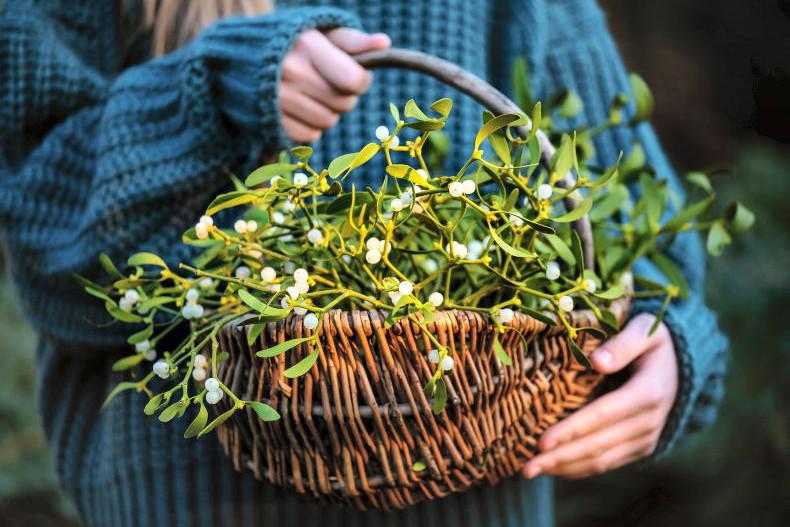
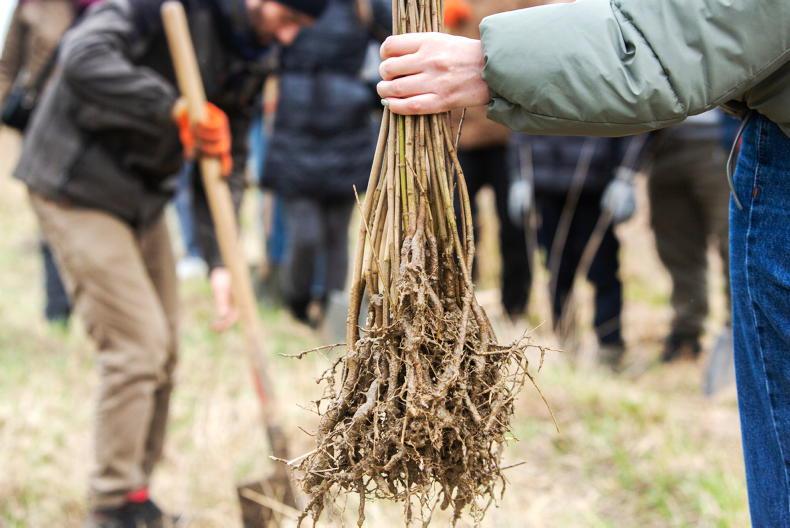
SHARING OPTIONS